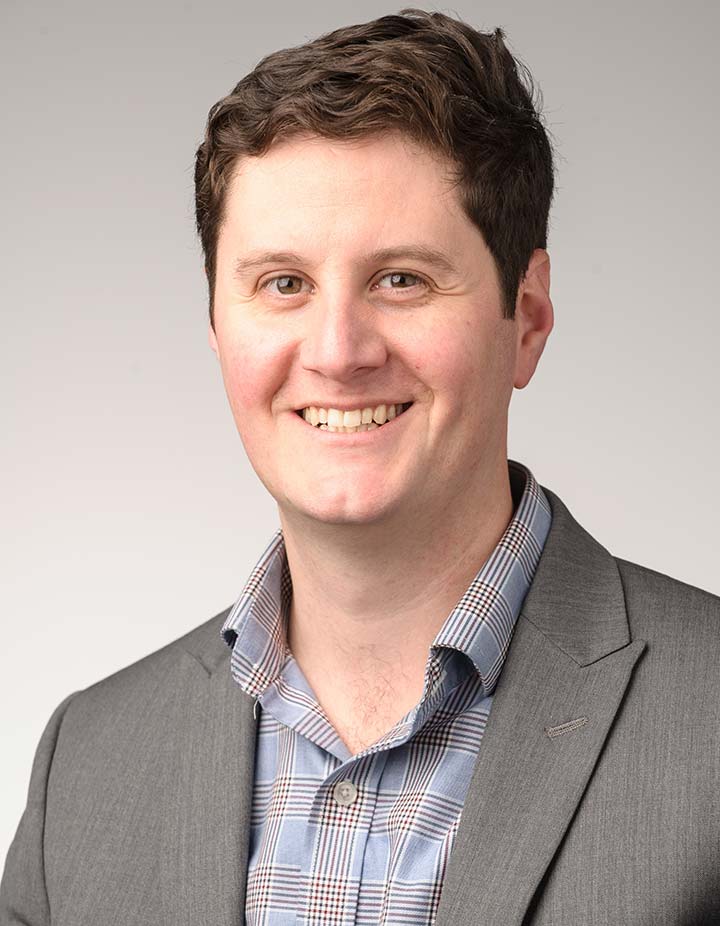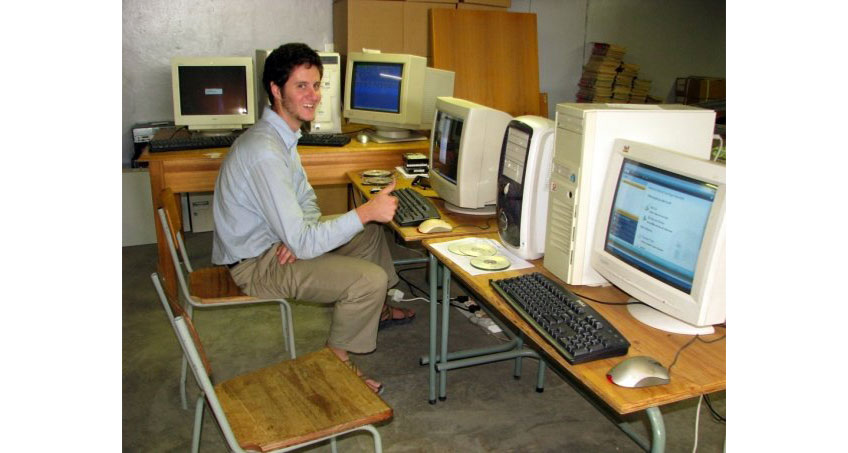Into the Unknown: Ben Sigrin Models How Consumers Adopt Renewables
NREL Energy Modeler Represents Psychosocial Decisions Mathematically To Predict Renewable Adoption

As a University of Texas graduate student in 2011, Ben Sigrin tried to understand how people make decisions about purchasing or leasing rooftop solar panels. He quickly found that it is not black or white—and that there is no average consumer.
"I'm somewhat envious of my colleagues who are electrical engineers," he said. "The way an electron moves on a transmission line is deterministic, but how a consumer makes a decision is not at all deterministic. It is deeply personal and subject to many factors that we may never be able to observe."
Through his research, Sigrin discovered a few common factors that impact the decision to adopt solar—whether the technology saves money, whether neighboring people have solar panels, and if the person considers him or herself to be innovative.
As it turned out, his graduate studies led him to a career in modeling consumer behavior and is shaping the understanding of renewable adoption potential at NREL. "As researchers, we have a responsibility to expand the frontier of knowledge. I'm a decade into this research, and there will always be more to learn," he said.
Math and Science from the Start
Although Sigrin excelled at math and science from a young age, he did not always know he wanted to be an energy modeler.
After getting his bachelor's in physics and a six-month stint as a volunteer forest ranger in the Bridger-Teton National Forest, he joined the Peace Corps in Namibia as a high school math and science teacher.
His main project was building a computer lab at the high school, bringing internet access to kids who had never seen a computer. Mid-way through the project, he hosted a community meeting about the development of the lab, which "went terribly." People yelled at each other, and at him.
"We were arrogant about what the community wanted from the computer lab," Sigrin said. "When people criticize you, it's very easy to shell up and say, 'They're wrong, I'm right.' I had to let go of my ego and really listen to incorporate their feedback. That lesson has stuck with me."

Ben Sigrin sits in the computer lab of the Namibia high school he worked at during Peace Corps. The computer lab included over 100 computers, which Sigrin admits most students used to write love letters to girlfriends or boyfriends and play Pac-Man. “Some things are universal with teens, it turns out,” he said and laughed. Photo courtesy of Ben Sigrin
Later, after completing his time with the Peace Corps, Sigrin sought out a graduate program that included math, science, behavioral psychology, and economics. He ultimately chose the dual Energy Resources and Public Affairs programs at the University of Texas. "My academic study set me up perfectly for my role at NREL," he said.
Leading the Distributed Generation Market Demand Model
Today, Sigrin is one of the few energy modelers at NREL who focuses on customer adoption. One of his central projects is leading the development of the Distributed Generation Market Demand (dGen) model.
dGen is an agent-based model that simulates customer decisions about rooftop solar and other distributed energy resource (DER) technologies, as well as how people use them. "The dGen model helps users to understand demand for distributed energy resources, and in turn, understand bigger, long-term questions like the role of DERs in a flexible, clean power system," Sigrin said.
The model is primarily used to predict adoption decisions in different scenarios. This data feeds into various distribution planning models and informs how much electricity will be needed from utility companies.
The dGen model has been used to analyze rooftop solar technical potential for low-to-moderate income households in the United States.
Another study by the dGen team showed that the costs of systematically misforecasting rooftop solar capacity are high: doing so over multiple successive planning cycles could increase the present value of utility system costs by up to $7 million per terawatt-hour (TWh) of electricity sales.
"Ben is a great leader in analysis," said Nate Blair, group manager of the Distributed Systems and Storage Group at NREL. "Not only does he work on the details, he maintains a constant vision of where he wants to take the distributed adoption modeling capability at NREL."
Another researcher, Kevin McCabe, who has worked on the dGen model for many years, said: "Ben has had his finger on the pulse of the distributed energy world. He's secured funding that allows the team to develop a more complex customer adoption model, often in partnership with such diverse entities as the Los Angeles Department of Water and Power, California Energy Commission, Colombian, Mexican, and Canadian governments, and many more. He's creating a community that strives to be at the forefront of distributed generation innovation."
Part of Sigrin's vision is making analysis data and tools available to the public. Historically, the dGen model has only been used within NREL, but there is now an open-source version thanks to years of hard work by the dGen team. Public users can now access model methodology, use the code, and receive technical support, marking a major milestone in the tool's history.
Modeling His Mentors
Since the beginning of his NREL career, Sigrin has never stopped learning how to improve his energy modeling. Working with mentors has taught him tough but important lessons. "It only takes one wrong number in a spreadsheet or your code to change everything," he said.
Now Sigrin is equipped to share these lessons with others and is having an impact on teammates with his curiosity and warmth.
"It has been a great experience working with Ben," said Paritosh Das, a modeling engineer on the dGen team. "It always amazes me how precisely he structures his thoughts on the whiteboard. He creates a collaborative working environment by encouraging and supporting different ideas brought together within the team, which is vital for a project's success."
Sigrin's team continues to contribute important discoveries in consumer behavior modeling—and is starting to partner with other teams across the laboratory's many research areas to collaborate and share findings.
A Complex Energy Future
Previously, solar adoption was the only distribution-scale renewable technology considered in future utility planning. Over time, that perspective has grown to include a very large group of DER technologies.
"I think the energy future will be complex," Sigrin said. Questions come to his mind—slow at first, and then faster and faster. Will people co-adopt storage with solar or adopt separately? How do smart thermostats and demand response fit in? As the grid decarbonizes, will people feel less of a personal responsibility to adopt renewables? At some point, it will be cheaper to own an electric vehicle than a gas-powered vehicle; how will that impact the grid and utility planning? How do customer decisions align with society's best interest?
He stopped. "All that good stuff," he said and smiled. "I'm excited."
Learn more about the dGen model and NREL's energy analysis research.
Last Updated May 28, 2025
